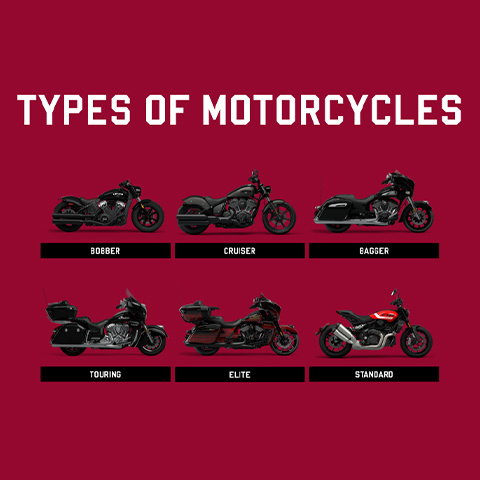The 4-Minute Rule for Motorcycle Boots
The 4-Minute Rule for Motorcycle Boots
Blog Article
Indicators on Motorcycle Boots You Need To Know
Table of ContentsGetting My Motorcycle Boots To WorkThe smart Trick of Motorcycle Boots That Nobody is DiscussingMotorcycle Boots for Beginners7 Easy Facts About Motorcycle Boots ExplainedThe smart Trick of Motorcycle Boots That Nobody is Talking AboutUnknown Facts About Motorcycle Boots
The essential components of modern motorcycles are provided below.; this has actually been made use of all through motorbike history however is currently coming to be extra typical.It was extensively unpopular and normally concerned as a poor concept at the time. It has actually because gotten some cachet in the modern customized bike globe as well because of the room financial savings it can pay for and the referral to an earlier era.
Though any storage container for fuel might be so called, the term is typically related to component of an engine system in which the gas is kept and driven (gas pump) or released (pressurized gas) right into an engine. A motorcycle fork is the section of a bike that holds the front wheel and permits one to guide.
Some Known Details About Motorcycle Boots
The 'fork' on a motorcycle consists of several parts. The three-way trees (also recognized as yokes) hold the fork tubes (which have the fork springs), and are secured to the neck of the structure by the steering stem.

Motorbikes have mainly, yet not specifically, been created with one to 4 cyndrical tubes, and designers have tried practically every conceivable layout. One of the most typical engine setups today are the single and twin, the V-twin, the opposed twin (or boxer), and the in-line three-way and in-line four. A number of others styles have actually reached automation, including the V-4, the flat 6-cylinder, the flat 4-cylinder, the in-line 6-cylinder, and the Wankel engine.
Motorcycle Boots Things To Know Before You Get This
Chain-drive uses sprockets and a roller chain, which needs both lubrication and change for prolongation (stretch) that takes place via wear. The lubricating substance undergoes being thrown off the fast-moving chain and leads to grime and dirt accumulation. Chains do wear away, and too much wear on the front and back gears can be unsafe.
Standard roller chain-drives experience the possibility for resonance, as the efficient span of activity in a chain and gear combination frequently alters throughout the transformation ("chordal activity"). If a drive gear rotates at consistent RPM, after that the chain (and the driven gear) must accelerate and slow down continuously. The majority of chain-driven motorcycles are fitted with a rubber bushed rear wheel center to remove this vibration issue.
These chain oilers differ in class, but all include significantly to the life of the chain. The custom-made of lubing by immersing the chain in a tin of hot oil stopped in the very early 1970s, once most chains had rubber "O'-rings. The initial Suzuki RE5 of 1975 featured a back chain oiler, yet the 1976 version had a covered chain, and its oiler was deleted as "unneeded".
Motorcycle Boots - Truths
They over at this website are not as sturdy when subjected to high horsepower as a chain. You can not modify the length and modification last drive proportions as easily as chains. And require bigger wheels compared to chain gears to get an effective final drive ratio.
A shaft-drive is typically completely confined; the visual sign is a tube extending from the back of the transmission to a bell real estate on the back wheel. Inside the bell housing a bevel equipment on the shaft companions with one more on the wheel install. This setup is remarkable in regards to sound and sanitation and is virtually maintenance-free, with the exemption of periodic fluid changes.
The extra gear sets are a resource of power loss and included weight. Essentially all high-performance racing bikes make use of chain-drive because they are the most mechanically reliable sending power to the rear wheel.

Motorcycle Boots - Questions
One of the most important attribute of any type of tire is the contact spot, the little location that touches with the road surface area while riding. There are tires created for dust bikes, touring, sporting activity and cruiser bikes. Motorcycle tires have knobbly, deep footsteps for optimum grip on loose dirt, mud, or gravel; such tires often tend to be less steady and noisier on smooth surface areas.
Touring tires are usually made from a harder rubber compound for better longevity, these may last much longer however tend to offer helpful site less outright grip compared to sporting activities tires at optimum operating temperatures. Touring tires typically offer more grasp at reduced temperatures and can be a lot more fit to riding in cool or wintertime problems where a sporting activity tire may never reach its optimum operating temperature level.
These often tend to have more powerful sidewalls as they are commonly fitted to larger machines. Motorsport or racing tires use the greatest of levels of grasp. As a result of the heats you can check here at which these tires usually run, use outside an auto racing atmosphere is risky, normally these tires do not reach their maximum temperature level which offers much less than optimal grasp.
The 10-Minute Rule for Motorcycle Boots

This can lead to brake dive. Brakes can either be drum or disc based, with disc brakes being a lot more typical on huge, contemporary or more expensive motorcycles for their far premium quiting power, specifically in wet conditions. There are several brake-performance-enhancing aftermarket components available for the majority of bikes, including brake pads of varying substances and steel-braided brake lines.
Report this page